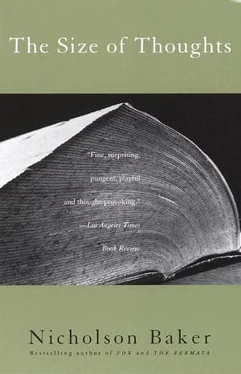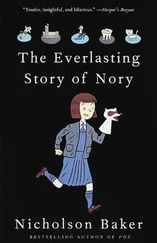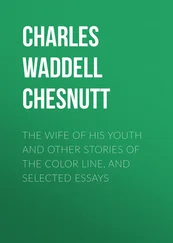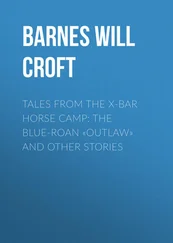15I am avoiding it.
16Maybe part of the reason scholastic learning was dismissed as “the lumber of the schools” was that Peter Lumber’s Sentences occasioned so many heavy folio volumes.
17Pattison’s Essays , vol. II (1889), “Pope and His Editors.”
18A. E. Housman, Selected Prose , ed. John Carter, p. 107. Carter’s selection was published in 1962, however, the same year as Pale Fire , so that in order for this passage to have had some slight influential bearing on Nabokov’s novel, we would have to assume that Nabokov read it in its original form in an issue of Oxford’s Classical Quarterly from 1907, which is a sizable assumption.
19Brian Boyd, Vladimir Nabokov: The Russian Years , p. 171.
20Garden darkened, daisy shut,
Child in bed, they slumber—
Glow-worm in the highway rut,
Mice among the lumber. (R. L. Stevenson, “Night and Day”)
21There is a mouse among the lumber of Stultifera Navis: or, The Modern Ship of Fools , by William Henry Ireland (1777–1835), once famous as a forger of Shakespeariana. Section XXXI, entitled “Of Foolish Antiquaries,” has:
Old stones, bones, coffins, without number,
Pots, pipkins, pans, such kitchen lumber;
Old chain, mail, armour, weapons rusty,
Coins, medals, parchments, writings musty:
Yet, after all antiques, not one compare I can
To that most rare of all, an antiquarian.
(“Mouse” comes earlier in the poem, in a footnote.) The English Duden (1960), a pictorial dictionary, gives an illustration for “lumber” in its two-page spread on “The Store Room” which shows an old umbrella, some cardboard boxes, a set of weightlifter’s disks, and (no. 74) “the mouse.”
22“Tremenheere’s ‘Cynthia’ of Propertius,” in Selected Prose , pp. 91–93.
23The lombard , or lombarda , was a kind of military “engine,” says the OED , used in sixteenth-century Spain. The first quotation the OED supplies for this separate meaning of lombard is from 1838. But Samuel Wesley uses artillery lumber in a metaphor in 1700, from his Epistle to a Friend concerning Poetry:
A thousand trivial Lumber-Thoughts will come,
A thousand Fagot-Lines will crowd for room;
Reform your Troops [i.e., rewrite, cut], and no Exemption grant,
You’ll gain in Strength, what you in Numbers want.
It’s tempting to think of the military lombard as a species of small trebuchet, turning dead lumbering weight into parabolic flight. (In the Scientific American , July 1995, Paul E. Chevedden, Les Eigenbrod, Vernard Foley, and Werner Soedel describe a modern reconstruction of a medieval trebuchet that successfully tossed a junk car, sans engine, eighty meters, using a thirty-ton counterweight. For a few seconds that car was not junk, it was science — it soared above all landfills.) But it may be that the lombarda wasn’t in fact a portable trebuchet, but some sort of gun or cannon (cf. the OED ’s ambiguous quotation of Zurita’s Annales , 1610: “Començo se a combatir la ciudad con diuersos trabucos [trebuchets?] y lombardas”) — or that Samuel Wesley (who was for a short time a chaplain on a man-of-war, according to the Dictionary of National Biography , and may have had some idea of what he is talking about, as I do not) is referring with his lumber-thoughts not to the lombarda at all, whatever it was, but the limber . The limber was a “two-wheeled carriage forming a detachable part of the equipment of all guns on travelling carriages,” according to the Encyclopaedia Britannica , 11th ed., “Limber.” The limber-box held ammunition. The notion of an army pulling its horse-drawn limber -carriages overland could have further helped the word “lumber” to load up on its heavy, hulking connotations. ( Limber is still a word in use in the military sense, by the way. You can buy a Civil War cannon and sixteen-inch limber for $130 from the Art & Artifact catalog, Fall Preview, 1995, p. 35: “The wheeled artillery limber with an opening trunk [that is, the limber-box] attaches to the back of the cannon.”) Possibly lumber-thoughts was a simple typo for limber-thoughts (rather than a variant spelling of lombard-thoughts ) in the one and only printing of Samuel Wesley’s poem.
24The quartos of Francis Jeffrey are little better than lumber now, but not the quartos of Southey: Southey brought us the story of Goldilocks and the Three Bears (in The Doctor ), as well as one of the great poems about scholarship. Palgrave in his Golden Treasury titled it “The Scholar.” Here are the first and last stanzas:
My days among the Dead are past;
Around me I behold,
Where’er these casual eyes are cast,
The mighty minds of old:
My never-failing friends are they,
With whom I converse day by day.
My hopes are with the Dead; anon
My place with them will be,
And I with them shall travel on
Through all Futurity;
Yet leaving here a name, I trust,
That will not perish in the dust.
25“Lumber-room as usual. Old fire-guard, old shoes, two fish-baskets, washing-stand on three legs, and a poker.” ( A Christmas Carol , “Marley’s Ghost.”) The detectable strain of anti-Semitism, or at least of raised Semitic consciousness, in some lumber -contexts can’t be ignored. Jews are the heroic keepers of the past; that fact has amused or irritated some poets and novelists. Nabokov himself, however, wasn’t anti-Semitic.
26The word (or a word, at least) for lumber-room in Russian is kladovaia . Vladimir Krymov wrote Iz Kladovoi Pisatelia (1951), which some online library catalogs translate as From a Writer’s Lumber Room . In keeping with general European usage, a lombard in Russian is a pawnshop.
And why was Nabokov so interested in the word? It may have caused him some memory-triggering linguistic trouble when he was teaching Madame Bovary in translation at Wellesley and Cornell. In the course he taught, partially published as Lectures on Literature , Nabokov worked over Dr. Jekyll and Mr. Hyde (which contains some “lumber of crates and bottles” and some “crazy lumber,” although he didn’t mention this fact to his students), and Bleak House; the scene at Krook’s Rag and Bottle Warehouse, displaying “Kitchen-Stuff,” “Old Iron,” “Waste Paper,” “shabby old volumes,” and “Bones” (no lumber ) Nabokov described in detail. Then he came to Madame Bovary , and dwelt on the “wonderful” jam-making scene (Part III, ch. 2) in which (and this is Nabokov, not Flaubert, speaking)
little Justin, who having been told to fetch an additional pan for the jam, took one from the lumber room in the dangerous neighborhood of a blue jar with arsenic.
This is the same lumber-room arsenic that Emma later eats, having coaxed the key from Justin. Twice in his lecture notes Nabokov mentions Flaubert’s “lumber room”—it is the alchemical garret in which Homais, the self-important druggist, stores his apothecary materials and performs chemical putterings, pretending to be more of a man of science than he is:
He often spent long hours alone there [writes Flaubert, as translated by Lowell Bair], labeling, decanting and repackaging, and he regarded it not as an ordinary storeroom, but as a veritable sanctuary from which issued all sorts of pills, boluses, decoctions, lotions and potions which he had made with his own hands and which would spread his fame throughout the countryside.
Читать дальше












